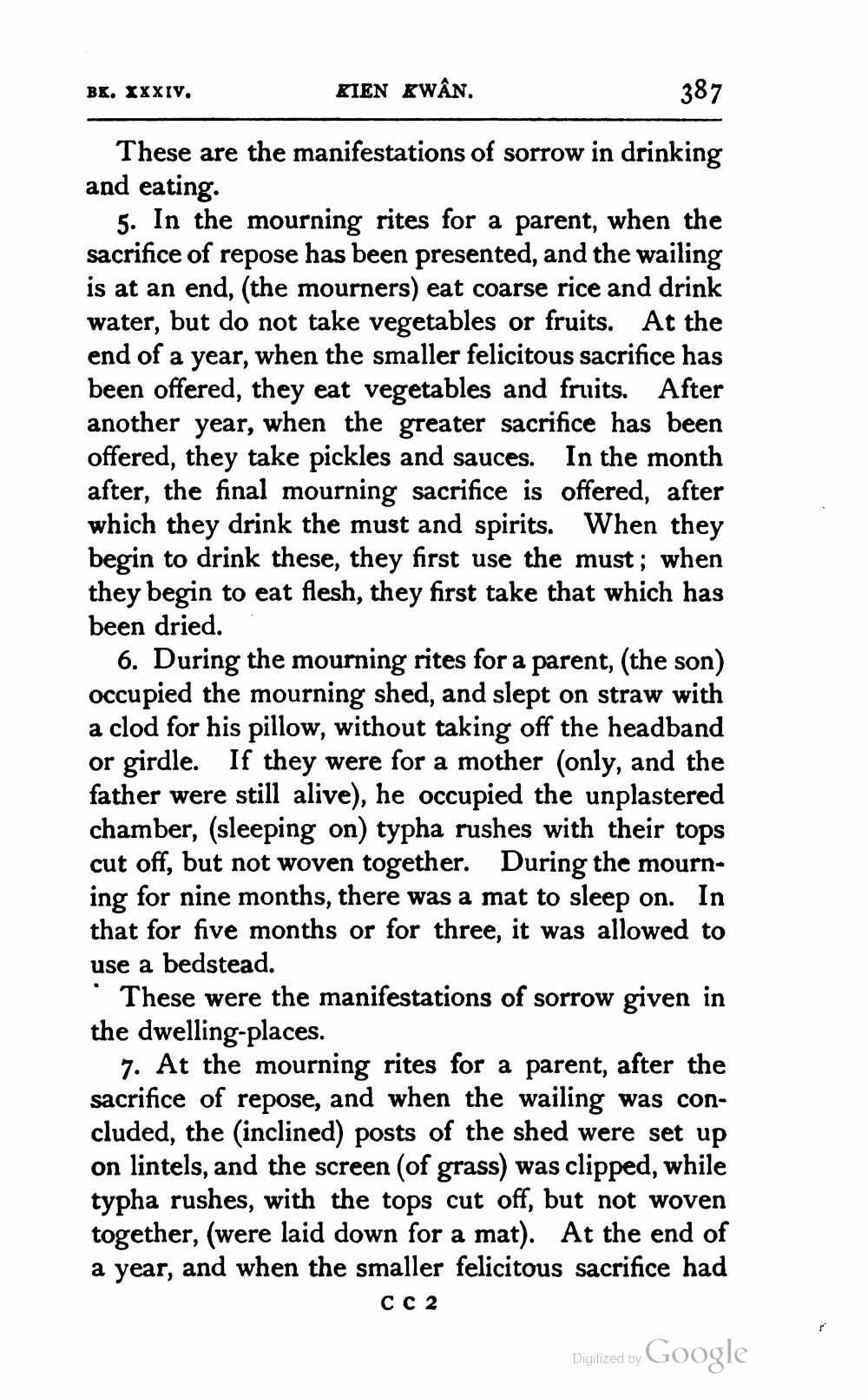________________
BK. XXXIV. KIEN KWÂN.
387 These are the manifestations of sorrow in drinking and eating.
5. In the mourning rites for a parent, when the sacrifice of repose has been presented, and the wailing is at an end, (the mourners) eat coarse rice and drink water, but do not take vegetables or fruits. At the end of a year, when the smaller felicitous sacrifice has been offered, they eat vegetables and fruits. After another year, when the greater sacrifice has been offered, they take pickles and sauces. In the month after, the final mourning sacrifice is offered, after which they drink the must and spirits. When they begin to drink these, they first use the must; when they begin to eat flesh, they first take that which has been dried.
6. During the mourning rites for a parent, (the son) occupied the mourning shed, and slept on straw with a clod for his pillow, without taking off the headband or girdle. If they were for a mother (only, and the father were still alive), he occupied the unplastered chamber, (sleeping on typha rushes with their tops cut off, but not woven together. During the mourning for nine months, there was a mat to sleep on. In that for five months or for three, it was allowed to use a bedstead.
These were the manifestations of sorrow given in the dwelling-places.
7. At the mourning rites for a parent, after the sacrifice of repose, and when the wailing was concluded, the inclined) posts of the shed were set up on lintels, and the screen (of grass) was clipped, while typha rushes, with the tops cut off, but not woven together, (were laid down for a mat). At the end of a year, and when the smaller felicitous sacrifice had
CC 2
Digitized by Google




